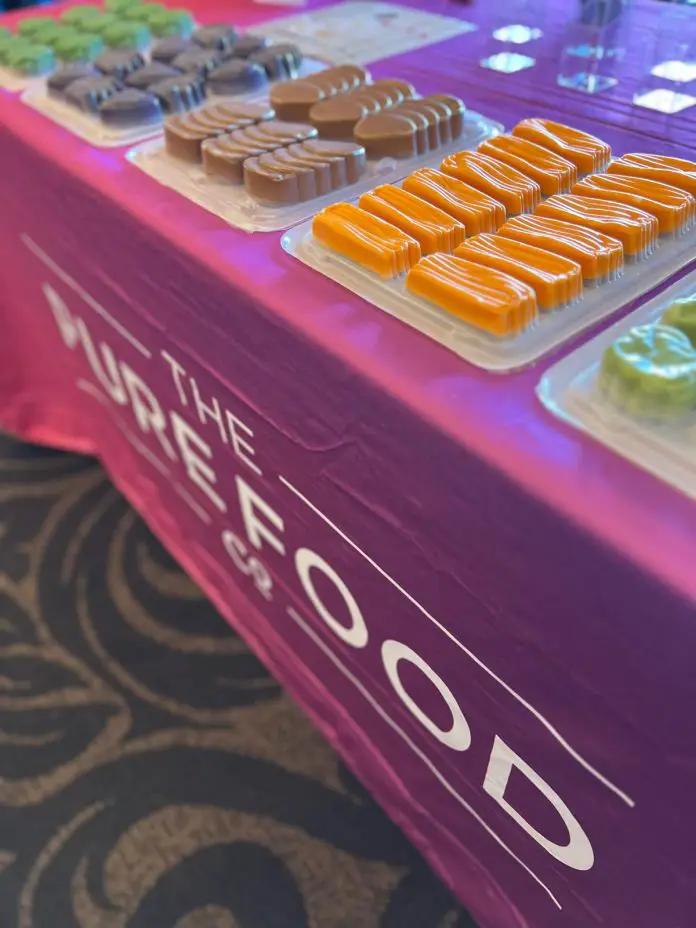As our population ages and more people transition into aged care, there’s an increased focus on facilities providing meals that cater for residents, not only in terms of nutrition but also meeting standards around food texture and safety, as well as offering residents the emotional experience of enjoying their meals.
The idea of cooking for the aged care sector goes beyond serving meals, it’s a genuine form of care and it requires a different preparation, cooking and serving approach to ensure that every aspect of food is done with the nutritional health and safety and wellbeing of the residents in mind.
Staff need to understand the complex dietary needs of the elderly, the regulations around food textures and safety in aged care, and the emotional aspects of dining for residents who may struggle with swallowing or digestion.
It is unlike any other hospitality job and being a good chef isn’t enough. The key is blending nutrition, size and safety with flavour and presentation, and having the kitchen capacity to achieve this.
For example, through our work with aged care facilities, we’re able to see firsthand the difference it can make for an elderly resident with diminished appetite or swallowing difficulties, to enjoy a smaller portion of texture-modified, fortified broccoli containing 2.6 times the protein of its steamed counterpart, without overwhelming the plate or their appetite.
It’s an approach that makes sure residents get the nutrients they need in a form that’s easier to eat and digest, helping them maintain muscle mass, bone health, and cognitive function.
Our Time and Motion studies have shown it takes around 23 steps to properly produce one variety of our Texture Modified Food (TMF) food for an aged care facility and this complexity extends beyond just vegetables like broccoli.
For daily menus to include a variety of TM fortified meats, fish, vegetables, desserts, and fruits, each item must meet the rigorous safety standards set by the International Dysphagia Diet Standardisation Initiative (IDDSI).
But consistently making texture-modified foods and achieving this level of fortification on a small scale is no easy feat. And while there are concerns that achieving such goals is costly and labour-intensive for facilities – with the right infrastructure and knowledge in place and support from experienced professionals in this space, staff can be supported in delivering an extensive variety of pureed meals that meet precise standards for texture, nutrients, portion size, and shape.
Done right, it can result in significant savings.
It’s a streamlined approach that removes the compliance risks and time and stress associated with menu development and preparation, easing the workload for kitchen teams.
And beyond meeting these clinical requirements, there’s also the dignity in presenting foods that look like what they’re supposed to be. Research shows presentation of pureed foods directly impacts a resident’s appetite and food intake.

When meals resemble their original form, like peas looking like peas or broccoli-like florets, we’re respecting the resident, enhancing their dining experience and fostering greater enjoyment and improved consumption.
For many residents who suffer from dysphagia, texture-modified foods that look similar to their natural forms can make mealtimes feel more normal and less distressing.
For residents with cognitive impairments like dementia, the visual aspect of foods can help with meal acceptance and enjoyment and encourage them to eat more willingly.
The key to delivering safe, nutritious and appealing meals for residents on texture-modified diets includes:
- Foods must be recognisable – proper food shaping helps maintain dignity for residents, as it allows them to experience meals that closely resemble the original dishes, rather than being served unappealing, unidentifiable masses of food. Beautiful aromas are key to ‘priming’ the diner.
- Efficiencies reduce risk – ready-to-serve, nutritionally optimised meals improve kitchen workflow but also significantly reduce the margin for error. Engaging professionals in this area reduces the risk of audit non-compliance or the need to re-do or discard improperly prepared food. Consistency and repeatability can create delightful experiences.
- Enhanced focus by chefs – chefs have the time to concentrate on creative aspects of meal preparation and presentation when they are not burdened with the labour-intensive processes of blending and fortifying meals or coming up with new meals. It also allows them time to engage more with the residents they are serving, creating a more personalised dining experience for residents.
- Portion precision and costs – supporting facilities with inventory management and the required infrastructure and necessary staff training ensures servings are consistent in size and shape. Attempting to prepare these foods in-house can result in the variation of portions, which impacts nutrients, consistency, appearance – and costs.
- Aesthetic presentation: When food looks appetising, residents are more likely to eat their entire meal, reducing the amount of uneaten food that gets thrown away. Achieving this aesthetic is important, and cannot be an afterthought, it must be part of the overall food preparation strategy.










